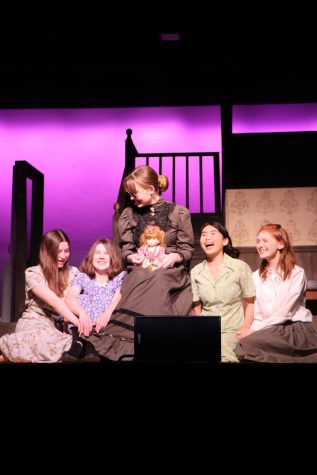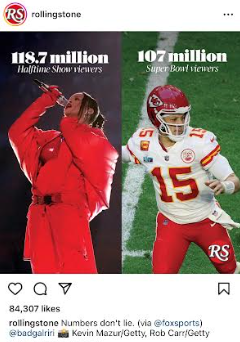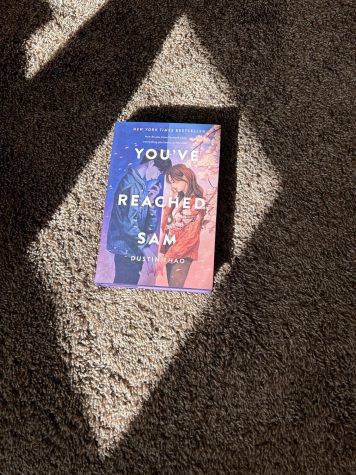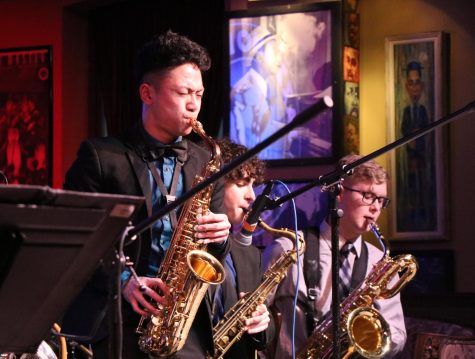New book paints life of a politician
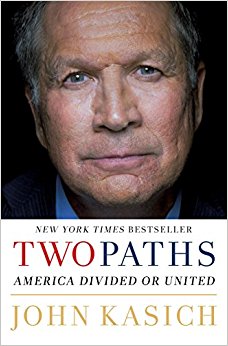
Kasich’s new book, “Two Paths: America Divided or United”, hit the shelves April 25, 2017.
May 15, 2017
“Two Paths: America Divided Or United” by John Kasich is unique because Kasich gives his day-by-day first-person perspective on what a true politician is like working with others in the capital and on the 2016 presidential campaign trail.
The book was released on April 25 and is ideal for people who are interested in politics, presidential campaigns or the lives of politicians themselves.
John Kasich (R) is the current governor of Ohio and had been a 2016 Republican presidential candidate. He was the last Republican candidate standing against Donald Trump in the Republican primary.
For a reader, the part of the book that is enjoyable is that Kasich early on in the story tries to display honesty, beginning with his early life as a politician. This gave a strong message that he can work well with others while also being honest with them and with himself.
“There are going to be days where people and politicians really like you, and other days when people and politicians really dislike you,” he wrote in the book. “I just stuck to my campaign promises because I keep my promises and stand for what I believe in. I don’t make ridiculous promises that I can’t keep. Luckily the people that didn’t like me came around, worked with me and respected me because I stuck with my position.”
One of the ways Kasich tried to distinguish himself from the other candidates was by being grounded with people and having conversations. As a result, another unique theme that transitioned from the early parts of the book to when he was on the campaign trail was working well with others and getting to know them. This quality was unique and stood out in the book because, when shown in the media, all the other presidential candidates seemed to just speak while the audience just listened, but in Kasich’s campaign, he showed how he would engage in conversation with voters at town hall meetings.
“One way we were successful was by having town halls usually four to six per day and actually getting to know the American voter. Voters feel heard and feel you actually care about them by having direct conversations and hearing what they have to say as opposed to just having a rally where you scream a bunch of nonsense and get nothing done,” stated Kasich.
The book continues to explain that this led voters to say that they felt like their voice mattered and that a real politician cared. Every now and then a member of the audience would come up and give Kasich a hug or cry because they felt like they were valued. This portion of the book for a reader was very emotional because Kasich learned how to understand everyday people’s troubles as they opened up to him.
One of the strongest messages Kasich had in his book was that America is at a crossroads in how citizens handle the country’s problems. This portion of the book was very moving because Kasich is secretly hinting at a comparison between his path toward resolving problems to that chosen by President Trump. This portion of the book brings a flow of emotions because half of America actually does think one way with Trump while the other half might think more along the lines of Kasich.
Finally, his message was convincing because he didn’t play dirty by attacking other politicians He tried connecting with communities and American citizens to get work done, and even a lot of Democrats as well as Republicans respect Kasich.
“We can choose the easy path of feeding off of anger and fear, blame others for our lack of success, think we are doomed and gloomed and fight with each other, and not work with both sides,” he wrote. “Or we can take my path, the brighter path. We can work together in our communities bottom up, listen to both sides, stay hopeful by keeping a positive message. We need to respect one another and work with one another to get things done and not just work with people that are on our side or agree with our political ideology, and not blame our problems on others, such as minorities.”


